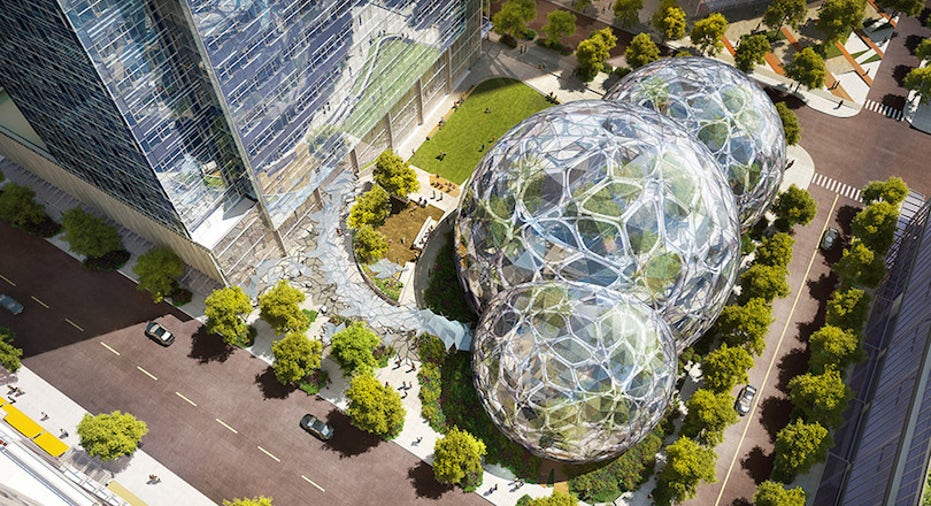Amazon Is Building Giant Greenhouses in Downtown Seattle

Beneath cranes and jackhammers, three giant, bubble-shaped greenhouses are slowly rising in the middle of downtown Seattle. They belong to Amazon, but unlike the rest of the Internet retailer's zany ideas, like delivering packages via drones, the greenhouses have almost nothing to do with commerce.
Instead, they're intended to be oases for the employees at Amazon HQ, who have their share of stresses, from Seattle's never-ending drizzle to a caustic work culture (if the New York Times is to be believed).
The bubbles, which will be completed in 2018, are the brainchild of NBBJ, an architecture firm building more than 3 million square feet of new office space for Amazon in Seattle. The Times recently got a tour of the nearly completed greenhouses, which have rooms with walls made from vines and an indoor creek.
Amazon has invested more than $4 billion in its downtown Seattle office spaces, though the spherical greenhouses won't be accessible to the public, according to the Times. That's partially because there are actual offices scattered throughout the more than 3,000 species of plants, from carnivorous pitcher plants to exotic Ecuadorian philodendrons and orchids.
"The whole idea was to get people to think more creatively, maybe come up with a new idea they wouldn't have if they were just in their office," NBBJ architect Dale Alberda told the Times.
Even as the likes of Facebook, Google, and Apple invest in their leafy suburban campuses, Amazon is not alone among tech companies looking to provide their employees with urban inspiration and refuge at the same time.
IBM, which has suburban campuses all over the world, including its Armonk, New York, headquarters, moved its entire Watson division to New York City in 2014. The 2,000-strong team now works at 51 Astor Place, a gleaming steel structure that, in addition to hosting Watson's servers, also boasts a 40-foot interactive wall that shows off Watson's artificial intelligence capabilities.
This article originally appeared on PCMag.com.